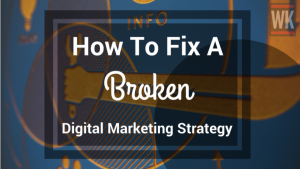Discover how to streamline your martech stack, drive real ROI and improve customer experience.
A “more is better” notion in marketing technology results in cluttered and inefficient stacks, overspending, underutilization and poor ROI.
It’s time to prioritize a strategic and holistic view of your company’s martech stack and create a lean, efficient, results-driven marketing technology infrastructure.
Learn how a marketing technology optimization framework benefits marketing organizations, enhances the customer experience and drives real ROI.
Marketing technology optimization: A paradigm shift
Marketing technology optimization (MTO) emphasizes:
- Evaluating current marketing technology tools and platforms.
- Identifying gaps or redundancies.
- Making data-driven decisions on eliminating existing or implementing new martech solutions.
This approach helps align the martech stack with the company’s overall business, marketing and customer experience goals, creating a streamlined and efficient set of tools that drive real ROI.
Further, MTO integrates ongoing optimization with the maintenance of the martech stack, preventing unnecessary spending and fostering maximum utilization of the tools. By adopting MTO, marketers can avoid the pitfalls of an unwieldy and bloated martech stack and focus on driving results with lean and efficient tools and platforms.
MTO benefits for the C-suite: More than just marketing
Marketing technology optimization offers unique advantages for CMOs, COOs and CFOs in driving ROI and improving customer experience.
For CFOs, MTO enables more effective budget allocation towards marketing technology, ensuring higher ROI and optimizing company performance. For COOs, MTO can lead to cost savings, enhanced team collaboration and reduced resources required for maintenance and support.
In addition, MTO supports compliance with industry regulations and data privacy laws. It empowers CMOs to adopt a proactive approach to compliance rather than reacting to data breaches or regulatory violations after they occur.
Change management and organizational buy-in for MTO
Creating a culture of marketing technology optimization within an organization requires effective change management and buy-in from key stakeholders. Strategies to foster a culture of MTO and obtain organizational buy-in include:
Establish clear goals and objectives
Set well-defined objectives aligned with business, marketing and customer experience goals to foster a shared understanding of MTO’s purpose and value.
Communicate benefits consistently
Share MTO’s advantages with stakeholders to build momentum, engagement and commitment. Emphasize improved efficiency, ROI, customer experience and compliance.
Involve stakeholders in decision-making
Actively engage stakeholders in assessment, strategy development and implementation for a sense of ownership and support, leading to better decision-making.
Provide ongoing training and support
Equip team members with skills and knowledge to manage the martech stack effectively. Demonstrate commitment to MTO and continuous improvement through training investments.
Celebrate successes
Acknowledge and celebrate MTO achievements to reinforce their value, motivate team members and encourage ongoing innovation and improvement in marketing technology optimization.
Budgeting and resource allocation for MTO success
Allocating financial resources and personnel to support MTO initiatives is crucial to ensuring ongoing optimization and maintenance of the martech stack. Best practices for budgeting and resource allocation in MTO include:
- Align budget with overarching goals: Focus on the business, marketing and customer experience goals to direct financial resources towards impactful initiatives.
- Consider the total cost of ownership (TCO): Account for acquisition, implementation, training and maintenance costs for comprehensive budgeting and informed technology investment decisions.
- Allocate resources for continuous optimization: Dedicate resources to regular assessments, updates and refinements, ensuring up-to-date marketing technology and sustained ROI.
- Invest in training and development: Equip personnel with the necessary skills to maximize marketing technology investments and contribute to MTO initiatives’ success.
- Assign “owners” for each tool or platform: Enhance accountability and encourage ongoing optimization within the martech stack by designating responsible leaders.
- Establish cross-functional teams: Collaborate with members from marketing, IT, data analytics and other departments to optimize the martech stack, improve decision-making and boost organizational performance.
- Monitor and adjust budget/resource allocation: Use data-driven KPIs and metrics to make informed decisions, adapt investments and maintain a cutting-edge martech stack that delivers sustained success.
Measuring and reporting on MTO success
To measure the success of MTO initiatives and demonstrate ROI to stakeholders, C-level executives should track key performance indicators (KPIs) and metrics aligned with the organization’s overall business, marketing and customer experience goals.
Some key KPIs and metrics to track include martech stack efficiency, marketing campaign performance, integration and data quality, compliance and data security and customer experience.
Embracing marketing technology optimization
Adopting a framework like marketing technology optimization becomes increasingly important as businesses evolve and adapt to the ever-changing digital environment. By embracing MTO, organizations can foster a culture of continuous improvement, stay ahead of the curve and maintain a competitive edge in digital marketing.
Focusing on efficiency, agility and alignment with organizational objectives can help marketers unlock the full potential of their martech stacks, maximizing return on investment and enhancing the customer experience.
The post Marketing technology optimization: The path to peak martech stack performance appeared first on MarTech.
MarTech(10)
Report Post


